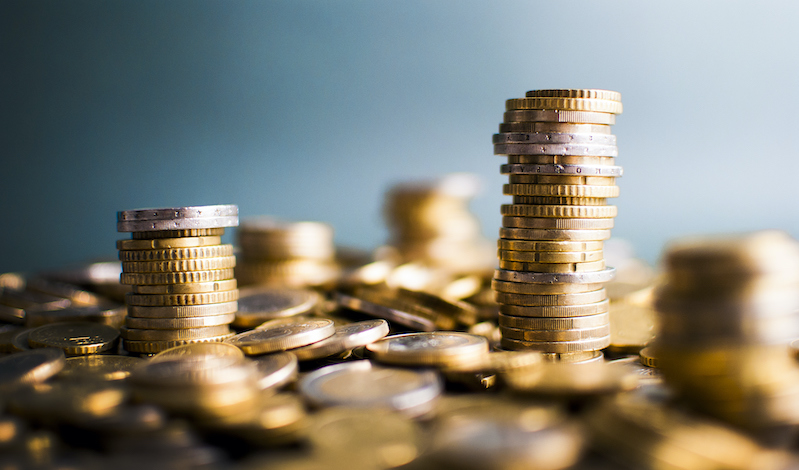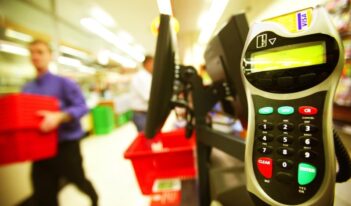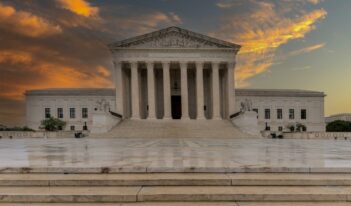
The Federal Reserve’s response to coin circulation disruptions has created a coin shortage.
Spare some change? The Federal Reserve says maybe not.
Americans visiting businesses may have noticed signage asking customers to pay with debit, credit, or exact change. Even going to banks or credit unions in search of coins still could leave a coinless person empty-handed.
Although the Board of Governors of the Federal Reserve System says the number of coins in the economy is “adequate,” COVID-19 closures of banks and other businesses have slowed circulation, leaving businesses and customers without change.
Putting coins into the hands of the people, it turns out, is a process that involves multiple regulatory bodies. The U.S. Mint authorizes coin issuances and produces coins, but follows forecasts from the Federal Reserve in determining production amounts. The Mint does not directly distribute coins to the public but instead relies on the 28 Federal Reserve Bank branches. The Federal Reserve Banks then distribute coins to depository institutions—public-facing banks—and to private coin terminals, which the Federal Reserve contracts to fulfill coin orders from depository institutions. From there, coins are distributed to the public.
The way the public has experienced this pandemic-era coin shortage stems from the relationship between the number of coins in circulation and the role of the Federal Reserve Banks in coin distribution. Because there are enough coins in the economy, according to the Federal Reserve’s estimates, federal agencies have worked to prevent banks from over-ordering coins and depleting the Mint’s inventory, despite the lack of movement of these coins from person to person.
This approach has led to the Federal Reserve placing a cap on coin orders placed by depository institutions in June 2020. The cap was lifted in January 2021 but reimplemented in May 2021, which is why individuals visiting banks for a roll of quarters may have to leave empty-handed.
The rise of cashless payment options has only exacerbated coin circulation issues, spurred in part by the availability of new technologies and in part by consumers’ desire to reduce hand-to-hand contact during the COVID-19 pandemic.
The decision to produce low-value coins such as pennies could also contribute to the coin shortage, argues William J. Luther, adjunct scholar at the Cato Institute. Critiquing the policy decisions of the Mint, Luther explains that pennies are costly to make even though they comprised 60 percent of the total coins in circulation in 2019. Pennies “tend to pile up” and are “rarely spent,” indicating Mint production capacity is wasted on the denomination when it could be producing higher value coins that exchange hands more quickly, Luther contends. But Henry J. Aaron, fellow at the Brookings Institution, adds that the impact on the economy from focusing on producing higher value coins would be “de minimis.”
All Americans have not been affected uniformly by coin circulation issues. Lower-income households, those living in rural areas, and racial minorities are all more likely to pay in cash. Those who live in housing without in-unit washing and drying machines struggle to get coins. The struggle is especially pronounced for people without a checking or savings account who are more likely to be paid in cash and use cash to pay bills.
A member of the U.S. Coin Task Force, Hannah Walker, acknowledged this harm, noting that the users hit “hardest are small cash-dependent businesses and those who are least well off.”
Although many businesses rely on coins to effectuate payments and return change to customers, some industries have been hit even harder. The Coin Laundry Association has committed to working with federal agencies and its members to facilitate coin distribution and provide feedback. Individual laundry operators have even crossed state lines in search of quarters to facilitate use of their coin-operated machines.
Federal agencies and private banks have implemented steps to mitigate the shortage. The Mint has been operating at full production capacity since June 2020 to combat circulation problems, putting 24 percent more coins into circulation in 2020 than 2019. The Federal Reserve implemented the previously mentioned cap as part of a “strategic allocation” of its coin inventories in June 2020 to distribute existing coins fairly to depository institutions. And some banks have offered incentives to encourage individuals to turn in the coins sitting in their wallets and drawers, such as cash bonuses for bringing in loose change.
The Federal Reserve recently convened a task force to address the U.S. coin problem, enlisting a team of experts from the Mint, the Federal Reserve, armored coin carriers, associations of banks and credit unions, and retailers.
While coins remain gridlocked, the Mint exhorts Americans to help solve the coin distribution issue by “spending coins, depositing them, or exchanging them for currency at financial institutions or taking them to a coin redemption kiosk.”



